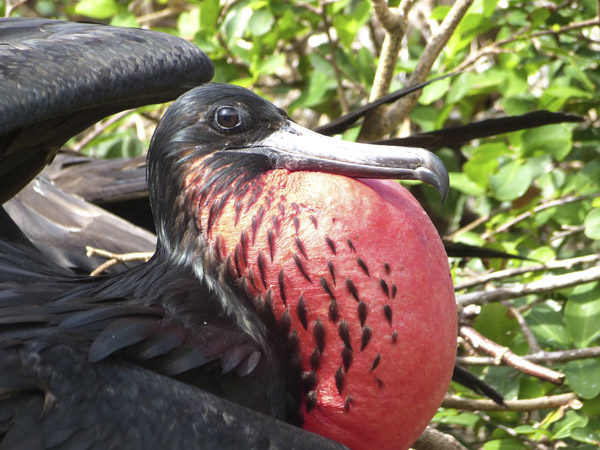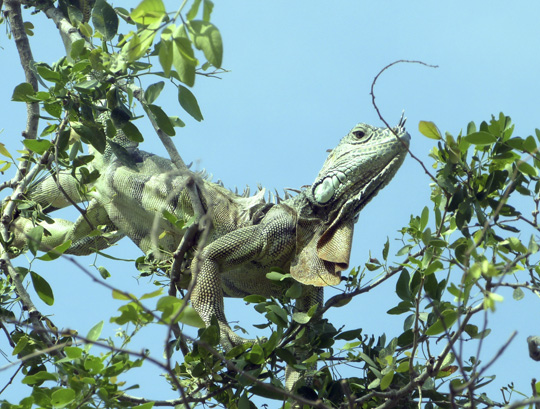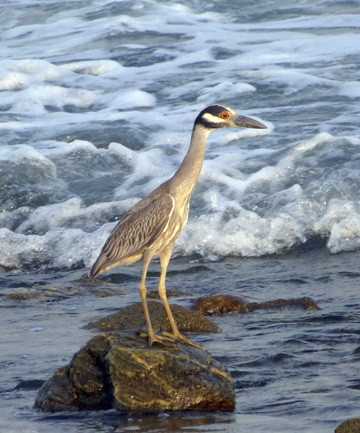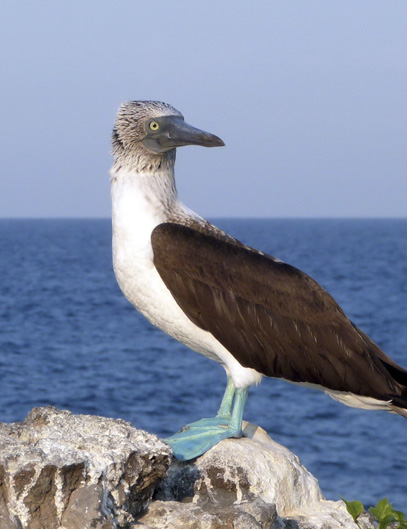Published in the Ocean Watch column, Honolulu Star-Advertiser © Susan Scott
April 1, 2013
LA CRUZ DE HUANACAXTLE, Mexico » I’ve been trying to enjoy the wildlife during this visit to Mexico, but some daysit seems like it’s another chore to squeeze into my work-filled days. I’m
outfitting my sailboat, Honu, for what sailors here call the puddle jump, the puddle being the Pacific Ocean. In a few days I’ll be on my way to the Marquesas, the easternmost archipelago of French Polynesia. The voyage from here, a small town near
Puerto Vallarta, to the island of Nuku Hiva, the administrative hub of the Marquesas, is 2,716 miles. It will take three weeks in good wind, four weeks in flaky wind.
 Male Frigate.
Male Frigate.
©2013 Susan Scott
To share the night watch, boat choresand companionship, two longtime friends, a father and son, are flying here to crew for me.They arrive tomorrow and off we will go.We have people to meet. One is my husband, Craig, who is flying from Honolulu to Nuku Hiva, where he will share captain’s duties as we explore.
Craig is well aware of how immersed a skipper can get in preparing for a voyage like this. He emailed, “Remember to take time for the herons and frigatebirds.”
I needed the nudge. With the responsibility of making the boat safe — provisioning for a month, installing a fixed water-maker and a new bilge pump, and replacing a burned-out mast light, among a hundred other things — I nearly forgot the reason I’m going, which is to see marine life.
So at first light last week, rather than crawl under the sink to track down a leak, I went on a nature walk.
In one hour I saw 60-some frigate birds perched atop three-story-tall rectangular signposts in the marina parking lot. All the birds were black-and-white-feathered juvenile females with one
magnificent exception. In a mating display, an all-black male sat with his red balloonlike throat pouch inflated.
Not one female paid that handsome guy a bit of attention — except me. I thought he looked stunning.
As I walked, I found hovering at the corner of my dock a school of about 20 3-foot-long needlefish, their silver bodies flashing like strobe lights in the morning sun.
Spiky puffer fish, yellow-green sergeants major and a school of mullet swam in the space between a rock wall and the entrance ramp, all of great interest to a green heron perched motionless, ready to strike, on the pier above them.
Two other water birds — a great blue heron and a snowy egret — fished from other end of the dock, and a yellow-crowned night heron stood off a sand beach on rocks exposed by the
low tide. Add to that a 4-foot-long iguana catching rays from a treetop at the taxi stand, and several blue-footed booby birds diving off the breakwater.
 Marina Iguana.
Marina Iguana.
©2013 Susan Scott
Wildlife gives my life meaning, but even so, I sometimes get so caught up in work that I forget to put down the tools, turn off the computer and let nature astonish me.
My marina walks (I take one every morning now) remind me of a Hawaii acquaintance who once said, “Susan, you talk about whales all the time, but I’ve lived here all my life and have never seen even one.”
To see marine life, you have to look at the ocean. Or sail across it.
Let the puddle jump begin — as soon as I fix that leak.


